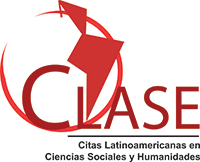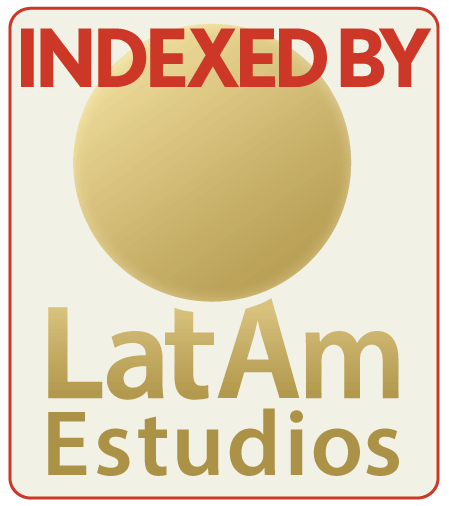Far and Near
Some Instances of the Use of Female Space in English Medieval Literature
DOI:
https://doi.org/10.24215/23139048e056Keywords:
space, gender, Ancrene Wisse, The Book of Margery KempeAbstract
The connection between space and gender has been a key issue in Medieval Studies for quite some time. Within that tradition, this work tries to approach two English texts: Ancrene Wisse, a manual intended for three 13th century recluses from Herefordshire, and The Book of Margery Kempe, the autobiographic account of a devout early fifteenth-century wife from King’s Lynn. Both texts prove the relevance of this relationship as well as confirm that these female figures would turn complementary in the late medieval religious landscape.
Downloads
References
Aelred de Rievaulx (1971). Aelredi Rievallensis. Opera omnia I: Opera Ascetica (Ed. A. Hoste y C. H. Talbot). Turnhout, Bélgica: Brepols.
Ancrene Wisse. Guide for Anchoresses (2009). (Trad. Bella Millett). Exeter, Reino Unido: U of Exeter P.
Aston, M. (1984). Lollards and Reformers: Images and Literacy in Late Medieval Religion. Londres, Reino Unido: Hambledon.
Auerbach, E. (1965). Literary Language and Its Public in Late Latin Antiquity and in the Middle Ages. Londres, Reino Unido: Routledge.
Beda (1969). Ecclesiastical History of the English People (Ed. B. Colgrave y R. A. B. Mynors). Oxford, Reino Unido: Oxford UP.
Bloch, H. (1991). Medieval Misogyny and the Invention of Romantic Love. Chicago, United States: U of Chicago P.
Bond, J. (2003). English Medieval Nunneries: Buildings, Precincts, and Estates. En D. Wood (Ed.), Women and Religion in Medieval England (pp. 46-90). Oxford, Reino Unido: Oxbow Books.
Brown, P. (1982). Society and the Holy in Late Antiquity. Binhamton, United States: Faber and Faber.
Brown, P. (1988). The Body and Society. Men, Women, and Sexual Renunciation in Early Christianity. Nueva York, United States: Columbia UP.
Cannon, C. (2003). Enclosure. En C. Dinshaw y D. Wallace (Eds.), The Cambridge Companion to Medieval Women’s Writing (pp. 109-23). Cambridge, Reino Unido: Cambridge UP.
Chitty, D. J. (1999). The Desert a City. Oxford, Reino Unido: Blackwell.
Clay, R. (1953). Further studies on medieval recluses. The Journal of the British Archaeological Association, serie 3ª (16), 74-86.
Dobson, E. J. (1976). The Origins of Ancrene Wisse. Londres, Reino Unido: Oxford UP.
Finke, L. (1992). Feminist Theory, Women’s Writing. Ithaca, United States: Cornell UP.
Georgianna, L. (1981). The Solitary Self. Individuality in the Ancrene Wisse. Cambridge, United States: Harvard UP.
Gilchrist, R. (1994). Gender and Material Culture: The Archaeology of Religious Women. Londres, Reino Unido: Routledge.
Giner Sempere, S. (1954). La mujer y la potestad de orden: incapacidad de la mujer. Argumentación histórica. Revista española de derecho canónico, (9), 841-69.
Grayson, J. (1974). Structure and Imagery in Ancrene Wisse. Hanover, United States: U of New Hampshire.
Green, D. H. (2007). Women Readers in the Middle Ages. Cambridge, Reino Unido: Cambridge UP.
Hanawalt, B. (1998). ‘Of Good and Ill Repute’. Gender and Social Control in Medieval England. Mineápolis, United States: U of Minnesota P.
Herbert McAvoy, L. y Hughes-Edwards M. (2005). Anchorites, Wombs and Tombs. Intersections of Gender and Enclosure in the Middle Ages. Cardiff, Reino Unido: U of Wales P.
Horner, S. (2001). The Discourse of Enclosure. Nueva York, United States: State U of New York P.
Jäggi, C. y Lobbedey, U. (2008). Church and Cloister: The Architecture of Female Monasticism in the Middle Ages. En J. F. Hamburger y S. Marti (Eds.), Crown & Veil: Female Monasticism from the Fifth to the Fifteenth Centuries (pp. 109-31). Nueva York, United States: Columbia UP.
Jones, E. A. (Ann. & Trad.) (2019). Hermits and Anchorites in England, 1200-1550. Manchester, Reino Unido: Manchester UP.
Kempe, M. (2000). The Book of Margery Kempe (Ed. B. Windeatt). Edinburgh Gate, Reino Unido: Longman Annotated Texts.
Klapisch-Zuber, C. (Ed.) (1992). Historia de las mujeres, La Edad Media, vol. II. Madrid, España: Taurus.
Licence, T. (2011). Hermits and Recluses in English Society. 950-1200. Oxford, Reino Unido: Oxford UP.
Lochrie, K. (1999). Covert Operations. The Medieval Uses of Secrecy. University Park, United States: U of Pennsylvania P.
Lochrie, K. (2003). Between Women. En C. Dinshaw y D. Wallace (Eds.), The Cambridge Companion to Medieval Women’s Writing (pp. 70-90). Cambridge, Reino Unido: Cambridge UP.
Macy, G. (2008). The Hidden History of Women’s Ordination. Female Clergy in the Medieval West. Oxford, Reino Unido: Oxford UP.
Makowski, E. (1997). Canon Law and Cloistered Women. Periculoso and Its Commentators, 1298-1545. Washington, United States: The Catholic U of America P.
McNamara, J. A. (1993). The Rhetoric of Orthodoxy: Clerical Authority and Female Innovation in the Struggle with Heresy. En U. Wiethaus (Ed.), Maps of Flesh and Light. The Religious Experience of Medieval Women Mystics (pp. 9-27). Syracusa, United States: Syracuse UP.
McNamara, J. A. (1996). Sisters in Arms. Catholic Nuns through Two Millennia. Cambridge, United States: Harvard UP.
Morin, J. (1969). Commentarius de sacris ecclesiae ordinationibus secundum antiquos et recentiores latinos, graecos, syrios et babylonios in tres partes distinctus. 1695; reprint. Farnborough, Reino Unido: Gregg.
Newman, B. (1995). From Virile Woman to Woman Christ: Studies in Medieval Religion and Literature. University Park, United States: U of Pennsylvania P.
Nicholson, J. (1978). Feminae Gloriosae: Women in the Age of Bede. En D. Baker (Ed.), Medieval Women (pp. 15-29). Oxford, Reino Unido: Blackwell.
Pien, J. (1746). Tractatus Praeliminaris De Ecclesiae Diaconisssis. En J. Bollandus et al. (Eds.), Acta Sanctorum, eds. Amberes, Holanda: Bernard Albert Vander Plassch.
Power, E. (1922). Medieval English Nunneries. Cambridge, Reino Unido: Cambridge UP.
Robertson, E. (1990a). An Anchorhold of Her Own: Female Anchoritic literature in thirteenth century England. En J. Bolton Holloway, C. S. Wright y J. Bechtold (Eds.), Equally in God’s Image: Women in the Middle Ages (pp. 170-183). Nueva York, United States: Peter Lang.
Robertson, E. (1990b). Early English Devotional Prose and the Female Audience. Knoxville, United States: The U of Tennessee P.
Salisbury, J. E. (1991). Church Fathers, Independent Virgins. Londres, Reino Unido: Verso.
Smith, L. (1997). Scriba, Femina: Medieval Depictions of Women Writing. En J. H. M. Taylor y L. Smith (Eds.), Women and the Book. Assessing the Visual Evidence (pp. 21-45). Toronto, Canadá: The British Library y The U of Toronto P.
Spacks, P. M. (1985). Gossip. Chicago, United States: U of Chicago P.
Tolkien, J. R. R. (1962). The English Text of the Ancrene Riwle: Ancrene Wisse: Edited from MS Corpus Christi College Cambridge 402. EETS. Londres, Reino Unido: Oxford UP.
Wada, Y. (2003). A Companion to the Ancrene Wisse. Cambridge, Reino Unido: D. S. Brewer.
Warren, A. K. (1985). Anchorites and Their Patrons in Medieval England. Berkeley, United States: U of California P.
Webb, D. (2007). Privacy and Solitude in the Middle Ages. Humbledon Continuum.
Wogan-Browne, J. (2001). Saints’s Lives & Women’s Literary Culture. Virginity and Its Authorizations. Oxford, Reino Unido: Oxford UP.
Published
How to Cite
Issue
Section
License
Copyright (c) 2022 Cuadernos de H ideas

This work is licensed under a Creative Commons Attribution-NonCommercial-ShareAlike 4.0 International License.
The acceptance of an original by the journal implies the non-exclusive transfer of the economic rights of the authors in favor of the editor, who allows reuse, after editing (postprint), under a Creative Commons Attribution License -NonCommercial-ShareAlike 4.0 International (CC BY-NC-SA 4.0)
In accordance with these terms, the material can be shared (copied and redistributed in any medium or format) and adapted (remixed, transformed and created from the material another work), provided that a) the authorship and original source of its publication (magazine and URL of the work), b) is not used for commercial purposes and c) the same license terms are maintained.
The transfer of non-exclusive rights implies that after its publication (postprint) in Cuadernos de H ideas the authors can publish their work in any language, medium and format; in such cases, it is requested that it be stated that the material was originally published in this journal.
Such assignment also implies the authorization of the authors for the work to be harvested by SEDICI, the institutional repository of the National University of La Plata, and be disseminated in the databases that the editorial team considers appropriate for increase the visibility of the publication and its authors.
Likewise, the journal encourages the authors so that after their publication in Cuadernos de H ideas they deposit their productions in other institutional and thematic repositories, under the principle that offering society scientific and academic production without restrictions contributes to a greater exchange of global knowledge.










.png)

























